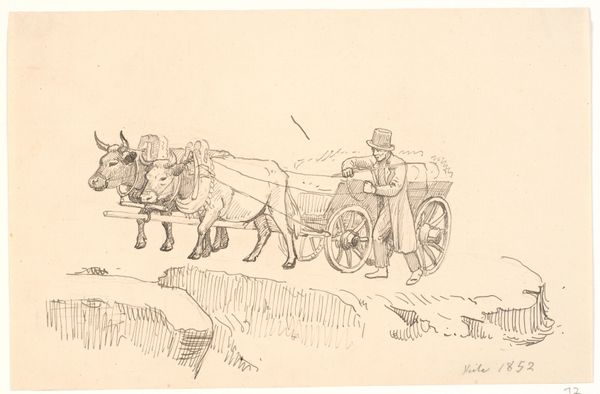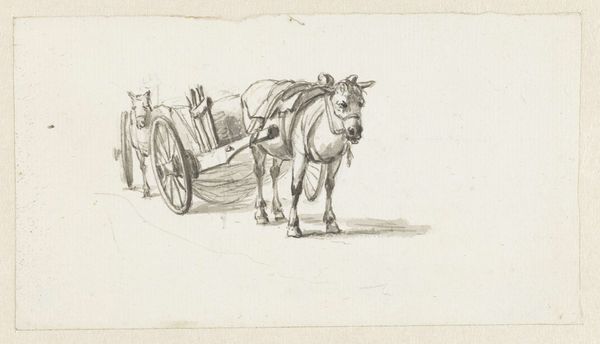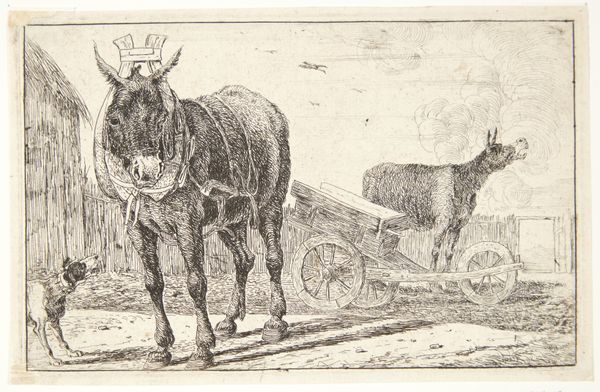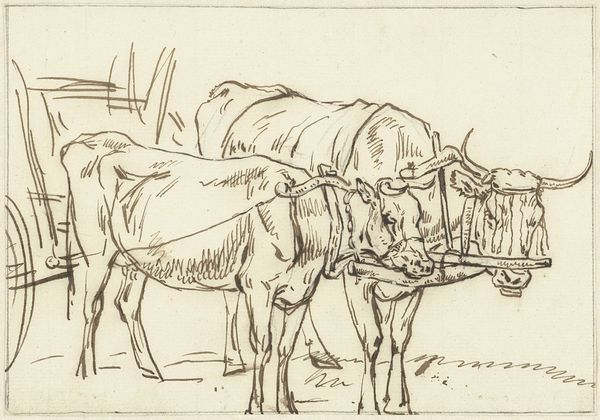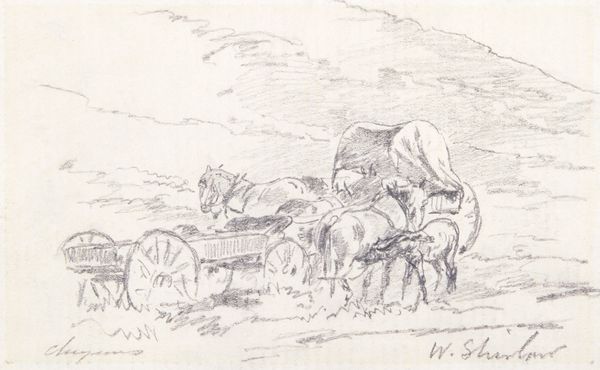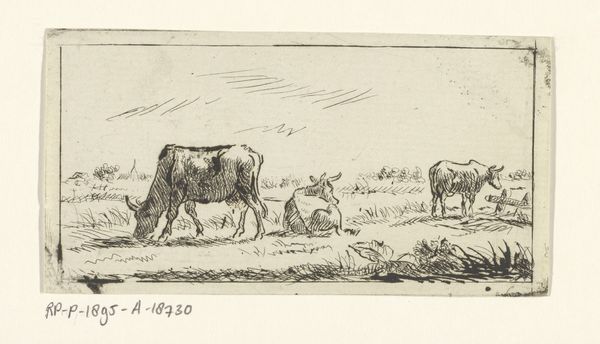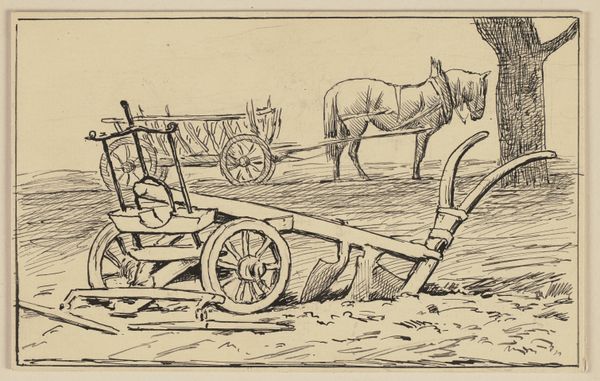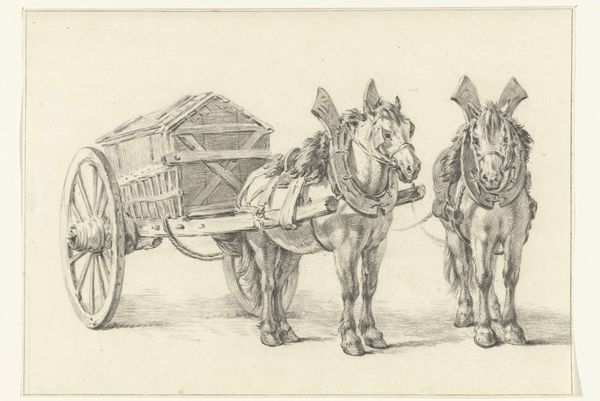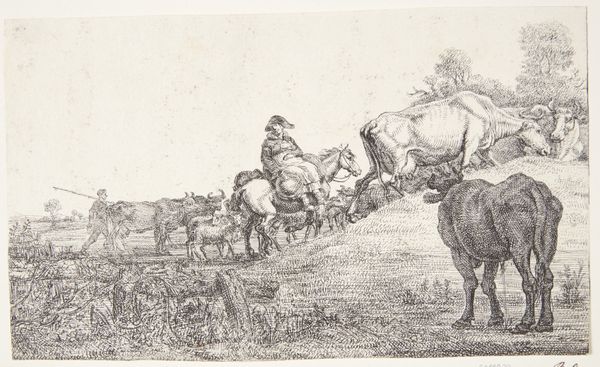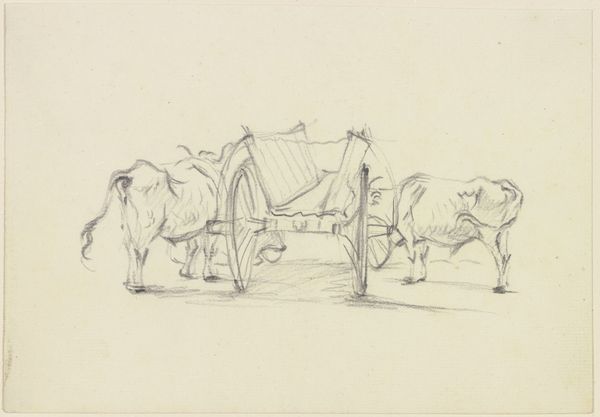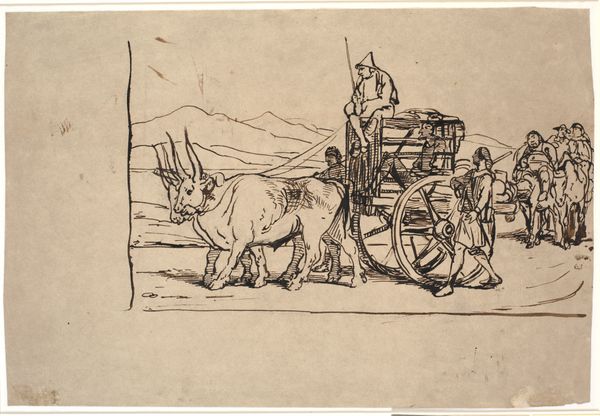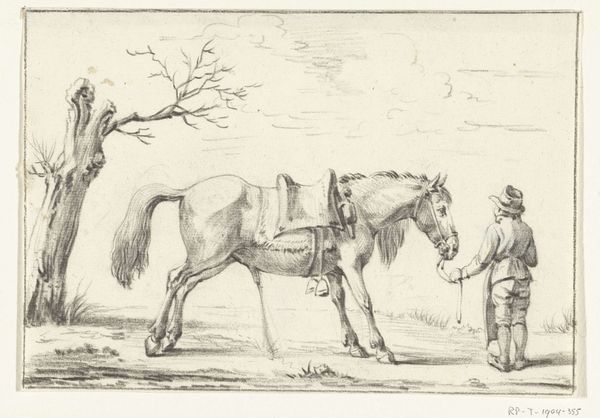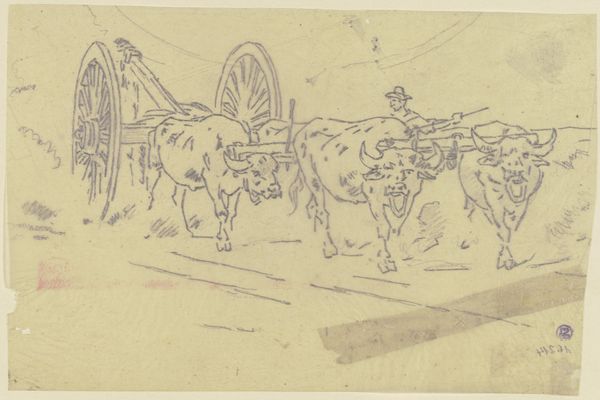
drawing, print, paper, ink, engraving
#
drawing
#
dutch-golden-age
# print
#
landscape
#
paper
#
ink
#
genre-painting
#
engraving
#
realism
Dimensions: height 65 mm, width 112 mm
Copyright: Rijks Museum: Open Domain
This small etching titled "Juli" was created by Dirck de Bray in the late 17th century. The image depicts a scene of labor, dominated by the motif of the hay wagon. In European art, such a motif is often associated with summer harvest and the bounty of nature. Here, the hay wagon symbolizes not only agricultural labor but also the cycle of life and the seasons. Consider similar motifs throughout history, such as the loaded carts in medieval tapestries, or in Pieter Bruegel the Elder’s paintings of peasant life. In these earlier iterations, the loaded cart may represent fertility or a community's shared labor. Yet, here, the image is stripped down to the bare essentials: figures engaged in a task, their gestures mirroring a timeless dance. The hay wagon motif persists, evolving yet echoing its origins. This image connects us to the collective memory of agricultural life, engaging us on a deep, subconscious level.
Comments
No comments
Be the first to comment and join the conversation on the ultimate creative platform.
